Factsheet: FCDO gender-based violence results April 2021 to March 2023
Published 11 March 2024
4.2 million people were reached with gender-based violence prevention or response services through bilateral Foreign, Commonwealth & Development Office (FCDO) support (April 2021 to March 2023).
Headlines
- 4.2 million (4,151 thousand) people were reached with gender-based violence (GBV) prevention or response services through FCDO support between April 2021 to March 2023
- of these 83% were reached with prevention activities, 11% accessed response services, with the remaining 6% accessing both or covering cases where it is not possible identify the type of support received
- Bangladesh was the country where most people accessed GBV services delivered through FCDO bilateral support, with over 1 million people reached
Key definitions
This indicator captures the estimated number of people accessing FCDO-supported gender-based violence prevention or response services (including for domestic abuse, female genital mutilation and conflict-related sexual violence) between April 2021 and March 2023 (financial years 2021 to 2022 and 2022 to 2023), through the FCDO’s bilateral (earmarked) Official Development Assistance (ODA) programming.
Response services include psychosocial support, counselling, medical care and legal services.
Prevention services includes GBV-related education, training, community engagement, advocacy activities / dialogues, and work to change the social drivers of GBV such as gender inequality.
The results do not capture any change in behaviour or mind-sets about GBV, nor any indirect beneficiaries of GBV prevention and response services. See methodology and how to use the data sections for more information.
The result is an indication of reach but is not the complete picture due to precautions taken to avoid double counting of beneficiaries.
Type of support
Of the 4.2 million people accessing FCDO supported GBV services between April 2021 and March 2023, 83% were reached with prevention activities and 11% accessed response services. The remaining proportion (6%) includes cases in which the service was a blend of both response and prevention or in which it was not possible identify the type of support received.
Percentage of results by type of support, 2021 to 2022 and 2022 to 2023
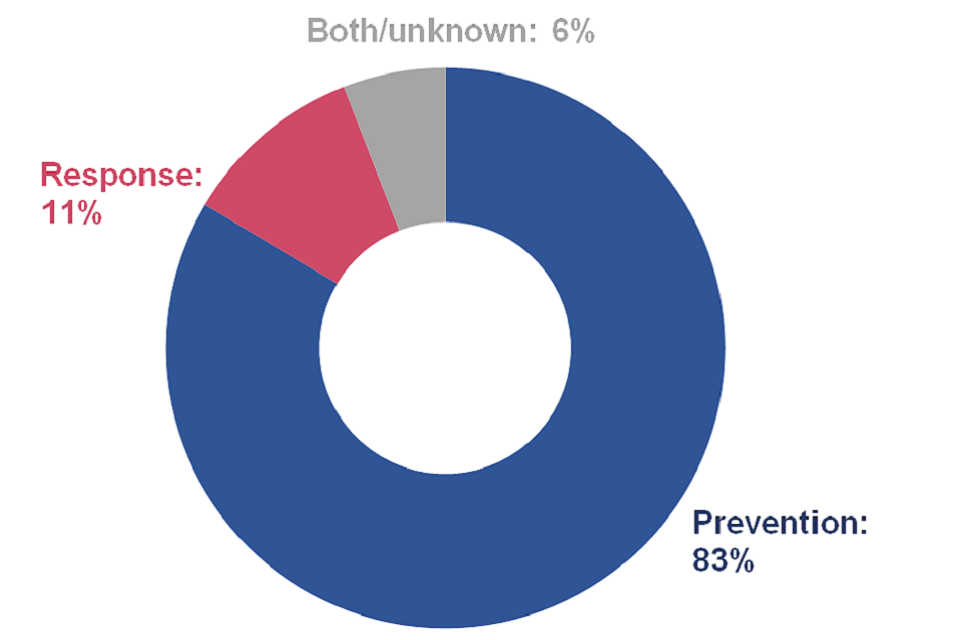
Data in chart – Prevention: 83%, Response: 11%, Both/unknown: 6%
Recipient countries
Bangladesh was the country where most people accessed GBV services through FCDO’s support, with at least 1 million people reached between April 2021 to March 2023.
See data table for full country breakdown.
People reached with GBV services by country, 2021 to 2022 and 2022 to 2023
Representing largest 5 countries in terms of number of people reached.
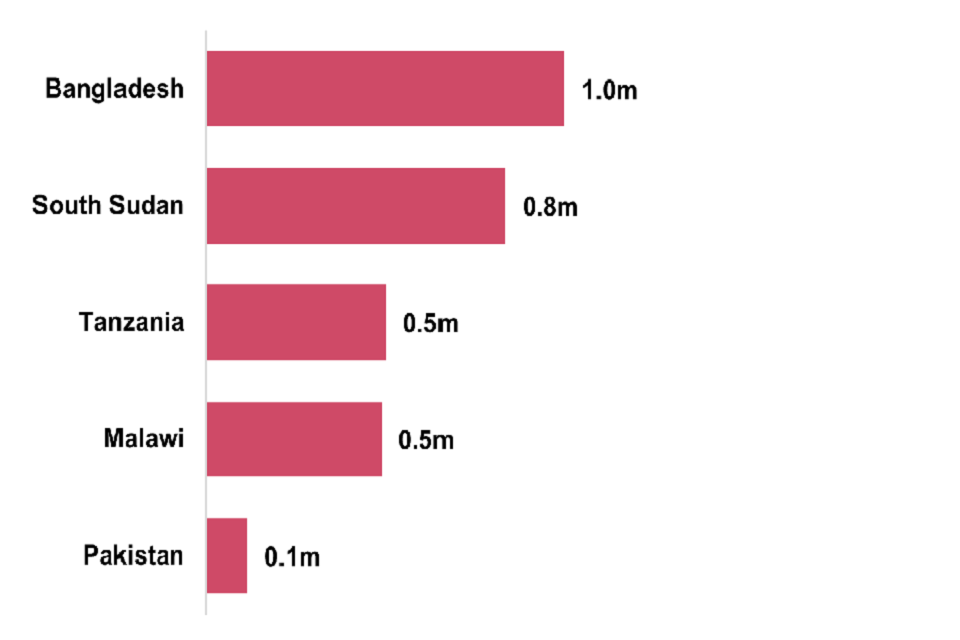
Data in chart – Bangladesh: 1 million, South Sudan: 0.8 million, Tanzania: 0.5 million, Malawi: 0.5 million, Pakistan: 0.1 million.
Gender
Headline
Of the 4.2 million people accessing FCDO supported GBV services, it is estimated that at least:
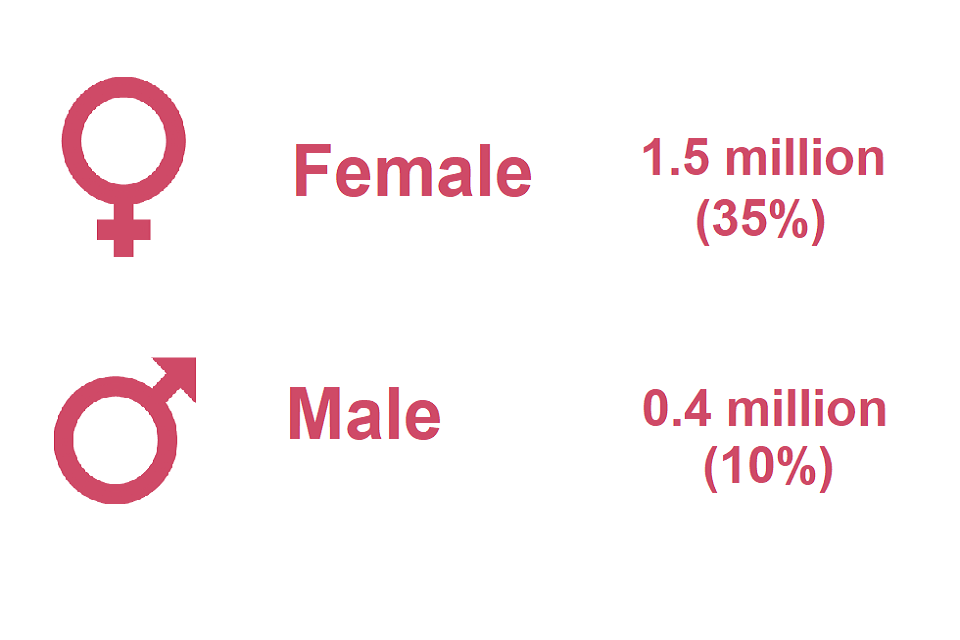
Data in graphic - Female: 1.5 million (35%), Male: 0.4 million (10%)
The gender of 55% of people reached is unspecified, see strengths and weaknesses section for more detail.
Response services
Of the people accessing FCDO-supported GBV response services, it is estimated that at least:
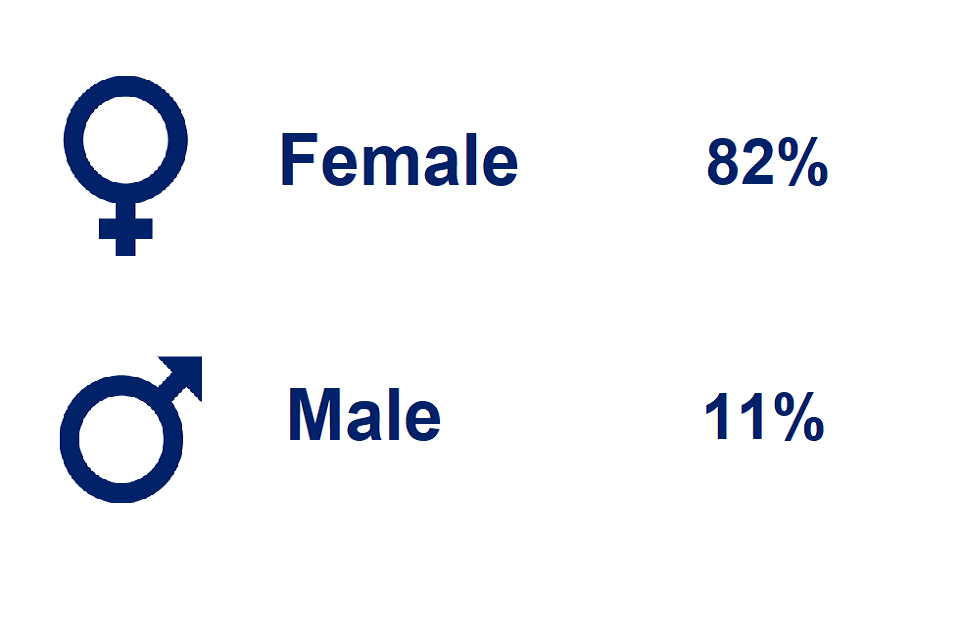
Data in graphic – Female: 82%, Male: 11%
The gender of 6% of people reached via response services is unspecified, in contrast the gender of 60% of people reached by prevention activities is unspecified.
Disability
At least 15,000 people accessing GBV services through FCDO support had a disability. We collected the disability status of only 11% of all the people supported, so the true number of people with disabilities supported is likely to be higher.
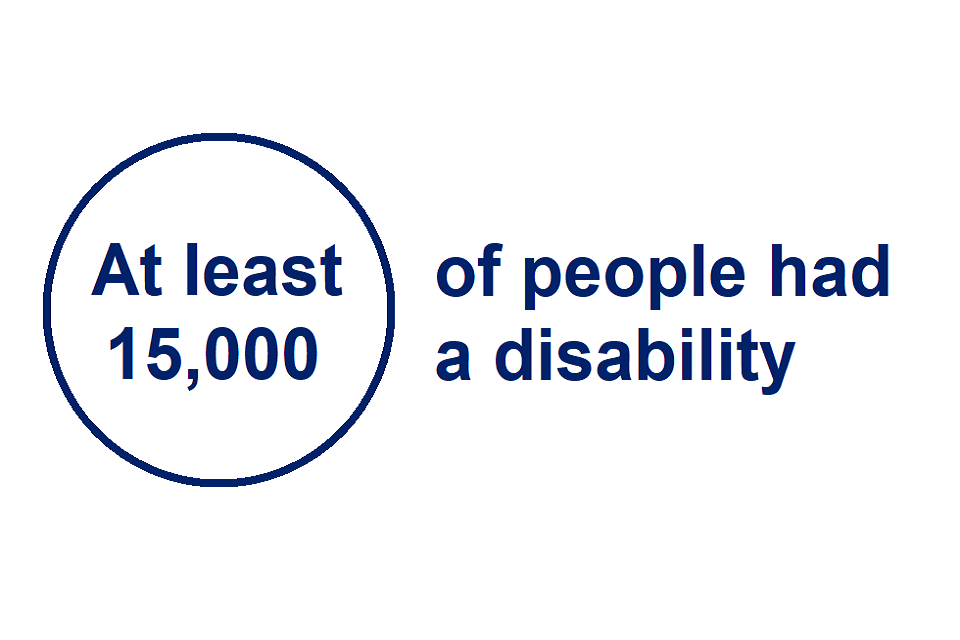
Data in graphic – At least 15,000 of people had a disability.
See strengths and weaknesses section for more information about data disaggregation.
Methodology
The number of people receiving gender-based violence prevention or response services (including for female genital mutilation and conflict related sexual violence) through FCDO support are reported between April 2021 to March 2023 in this indicator.
Response services includes psychosocial support, counselling, medical care, and legal services.
Prevention services includes GBV-related education, training, community engagement, advocacy activities / dialogues, and work to change the social drivers of GBV such as gender inequality. This also includes people who have been trained as trainers.
Both/Unknown is used when the service was a blend of prevention and response or when it is not possible identify the type of service.
If a recipient accesses more than one type of response service, and/or prevention service, they are only be counted once within this measure. In some cases, the prevention figure has been adjusted to account for the likelihood of a recipient seeking response service after a prevention service such as community awareness.
When aggregating the number of people reached at the country level and across years, adjustments are made to ensure that each beneficiary only is counted once:
- if more than one FCDO ODA programme covers the same population, only results from the programme with the highest reach is included
- if a programme was operating across both years (2021 to 2022 and 2022 to 2023) and was covering the same population, then only the highest annual figure was included. This is known as a ‘peak’ methodology. However, if the programme targeted different populations in each year, then then both annual figures were included – known as a ‘cumulative’ methodology
In cases where it was not possible to discount a probability of double count, a cautious approach was taken – with only the highest result being reported. This means that the reported results are likely to underestimate the number of people reached.
For 2021 to 2022 and 2022 to 2023, gender and disability disaggregated data is available:
- in some programmes, the number of females and males have been counted, whereas in other programmes the gender breakdown is based on an estimate
- disability status was available for 11% of participants. The Washington Group questions were used in most of these programmes. Alternative approaches such as self-identification questions or diagnostic questions were used in when they were more appropriate. However, self-identification is likely to lead to underreporting owing to stigma. FCDO is keen to increase this coverage year on year
- age and geography was also collected but needs further work to improve the quality and harmonisation of this breakdown (such as consistent age grouping)
Quality assurance has been carried out by Statistics Advisers with a focus on checking calculations and aggregations.
Strengths and weaknesses
- most results originate from delivery partners’ reporting or management information systems, which are generally accurate and timely
- it is likely that the results are an underestimate due to the precautions taken to remove the risk of double counting beneficiaries (see methodology)
- the FCDO reports results in UK financial years (April to March). Where partner data relate to calendar years or other timeframes, an appropriate overlapping period will be used consistently over time without adjustment
- figures for countries/departments were suppressed where the number recipients were below 1,000 or where the context meant suppression was needed to protect partners and recipients of GBV services. These results have been aggregated together and are presented under ‘Other’ in the accompanying data table. A regional breakdown has not been provided to avoid the risk of reverse engineering the figures in the ‘Other’ category
- through its Inclusive Data Charter Action Plan, FCDO is committed to collecting data disaggregated by gender, disability, age and geography, where possible. FCDO is working with partners and on internal data systems with a view to improve availability of disaggregated data. For instance, disability information was only collected for 11% of recipients, FCDO is keen to increase this coverage year on year
- gender information was not collected for 55% of the recipients of GBV services. The majority of these were participants in prevention activities such as a GBV awareness community course where gender information was not collected. FCDO will improve the coverage of gender disaggregation in 2023 to 2024 GBV result calculation and publication
How to use the data
This result covers all recipients for financial year 2021 to 2022 and 2022 to 2023, which will be the baseline for future updates. This result for should not be added on to future results as there will be duplication between the beneficiaries (ie the same person being reached with support in multiple years).
Results from FCDO core contributions (unearmarked funding) to multilateral agencies that deliver GBV services are not included in this result. This core funding would have further contributed to reaching people through the multilateral’s response and prevention interventions. For instance, in 2022 the UK provided £8 million[footnote 1] in unearmarked funding to the UN Population Fund (UNFPA) – in 2022 UNFPA reached 2 million women, girls and young people with GBV services in 46 countries with humanitarian needs.[footnote 2]
Contact
We are keen to enhance the value of these statistics and welcome your feedback or questions by email: statistics@fcdo.gov.uk
-
UK ODA figures, FCDO, Statistics on International Development: Final UK Aid Spend, Table A8 ↩
-
Number of people reached by UNFPA GBV services, UNFPA, Humanitarian Results, 2022 Global Snapshot ↩
